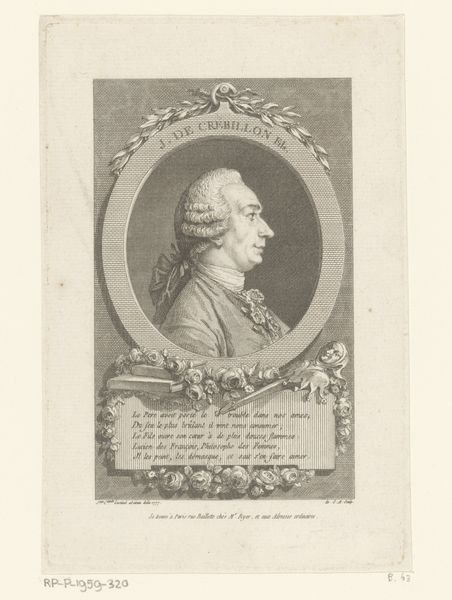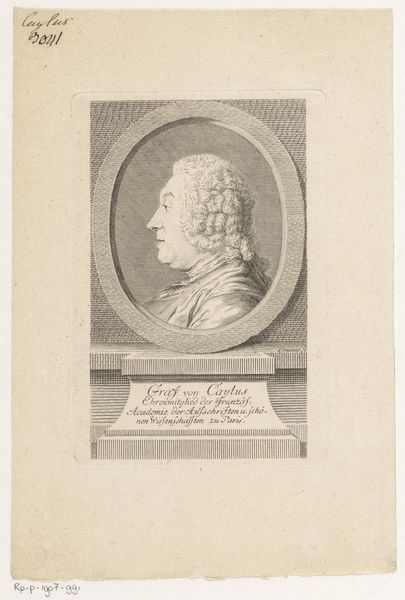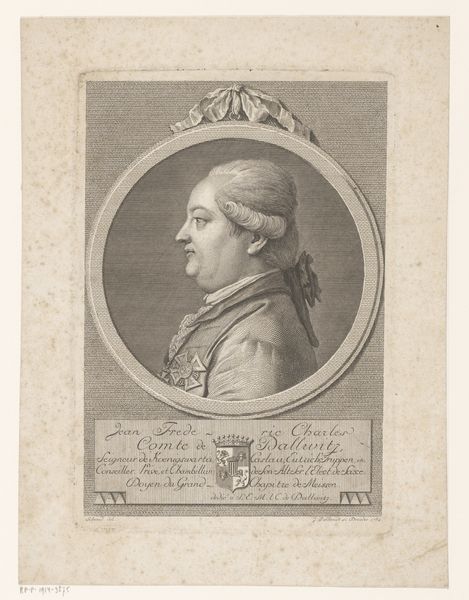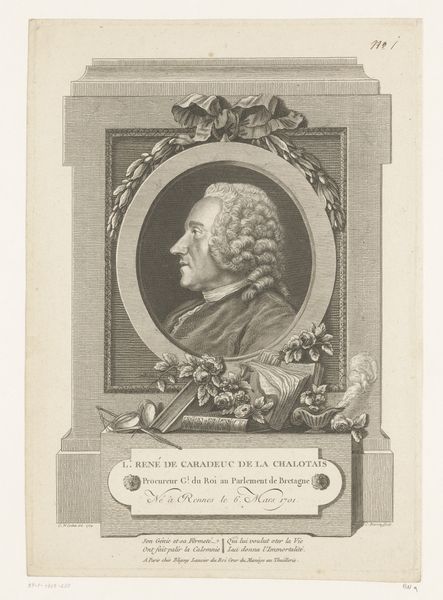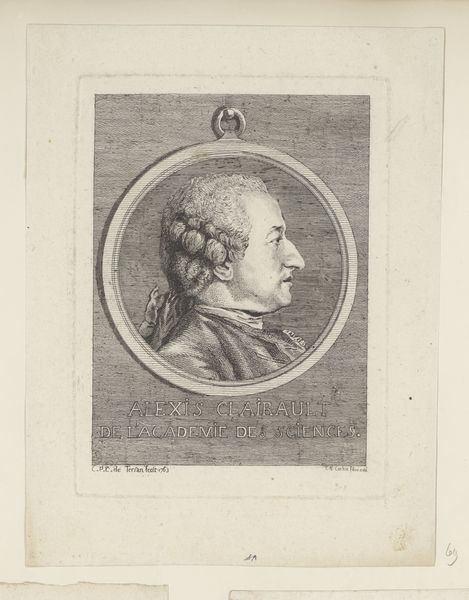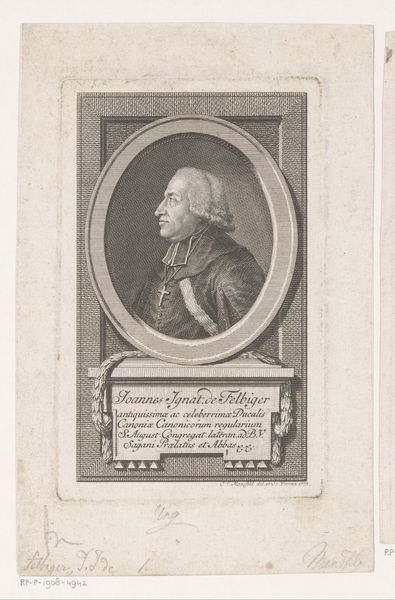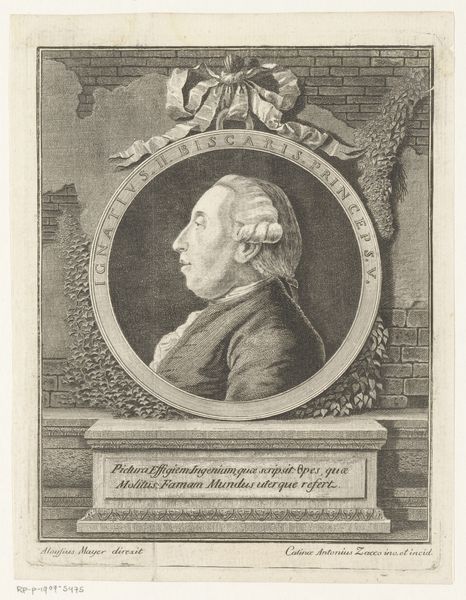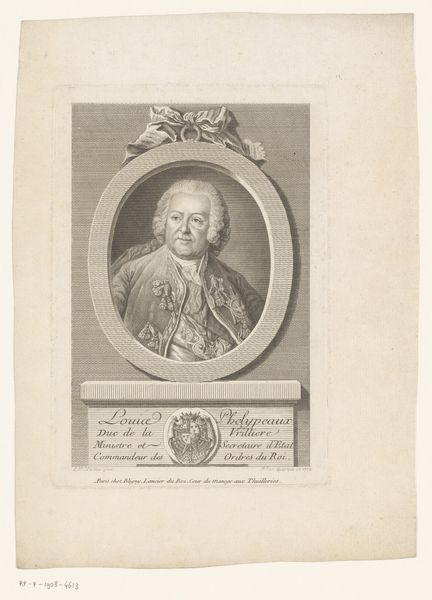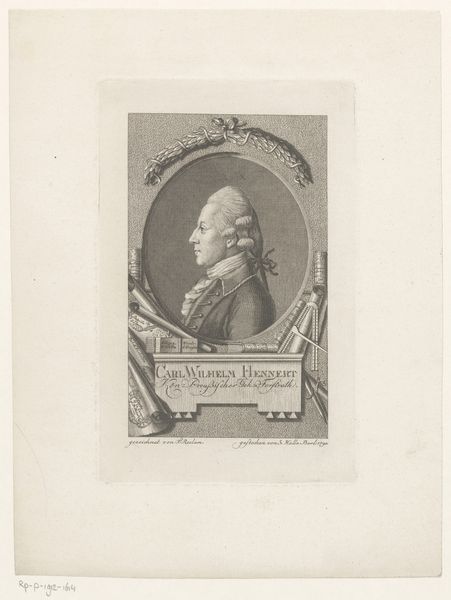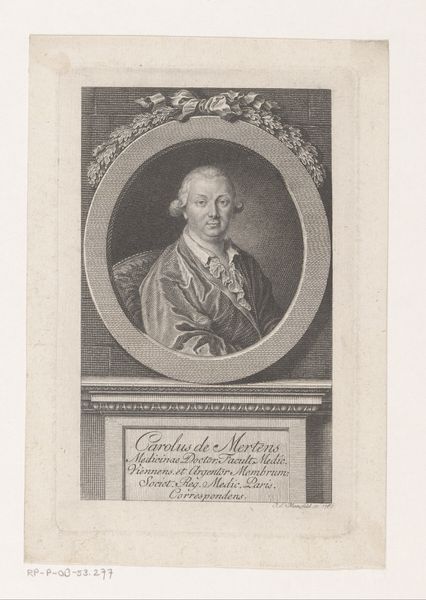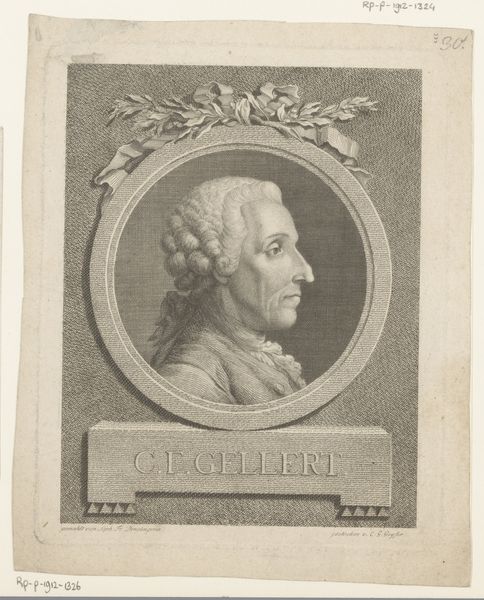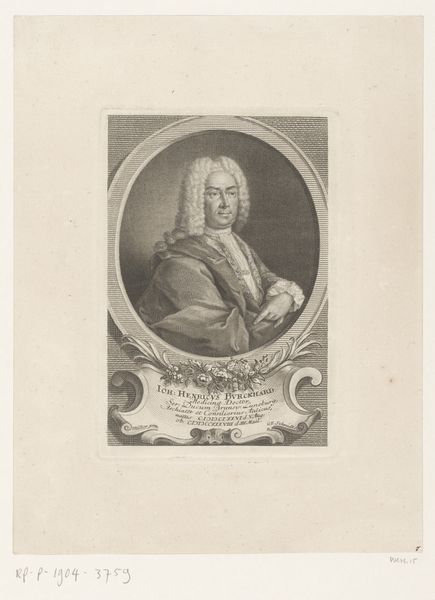
Dimensions: height 226 mm, width 166 mm
Copyright: Rijks Museum: Open Domain
Editor: This is a print called "Portret van François Vincent Guyot de Chenizot" by Noël Pruneau, made sometime between 1761 and 1800. It’s an engraving on paper. I'm struck by the formality of it; everything seems carefully positioned to convey status. What symbols stand out to you in this work? Curator: It’s fascinating how images of power embed themselves in cultural memory. Note how the portrait is presented in profile within an oval frame. This consciously recalls ancient Roman imperial portraiture, linking Guyot de Chenizot to the enduring authority of the classical world. What does that consciously referenced visual language say to you about societal structures? Editor: So, even the shape of the portrait is making a statement about authority? I hadn’t thought about that! Curator: Absolutely! And consider the crest, prominently displayed. Heraldry isn't merely decorative; it's a codified visual language. It’s meant to immediately signal family history, allegiance, and position within the social hierarchy. And the wig, of course! The powdered wig indicates adherence to a specific code of dress and behavior, associating him with a certain level of refinement and access. Do you think this form of display conveys something lasting, even to contemporary eyes? Editor: I see what you mean! The symbols build upon each other, reinforcing his importance. Even today, the overall effect communicates a sense of established power, although maybe not with the same immediate impact. Curator: Indeed. These symbols are cultural artifacts, and our reading of them evolves. What was once immediately legible now requires decoding. This print acts as a window into a past world of signs and meanings. Editor: That’s a really interesting point. It shows how symbols can outlive their original context. Curator: Exactly. It’s a potent reminder of how carefully constructed the visual language of power always has been, and perhaps always will be.
Comments
No comments
Be the first to comment and join the conversation on the ultimate creative platform.
